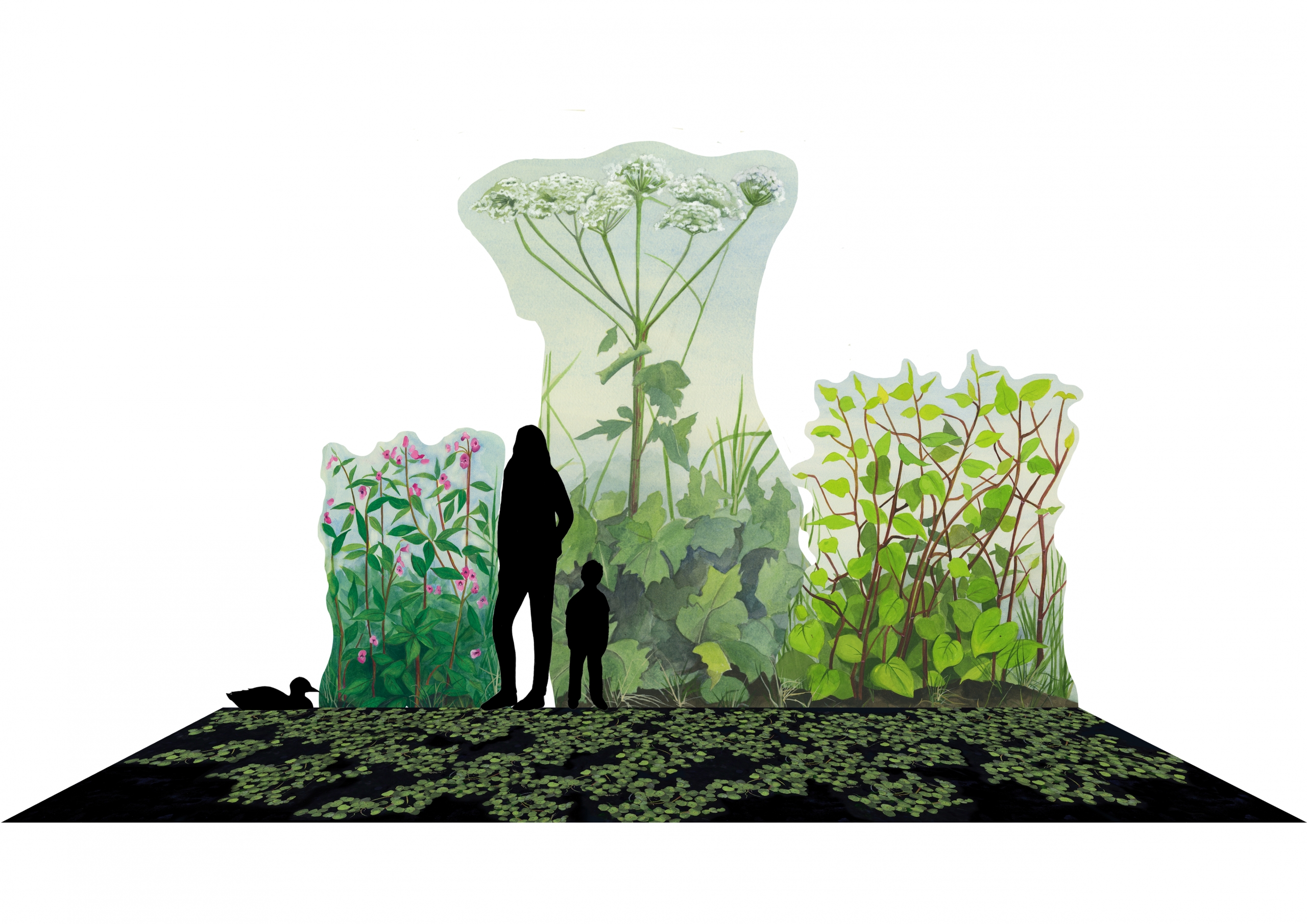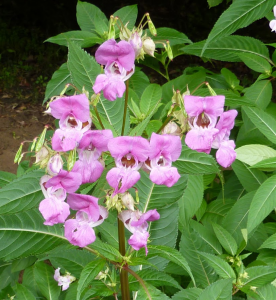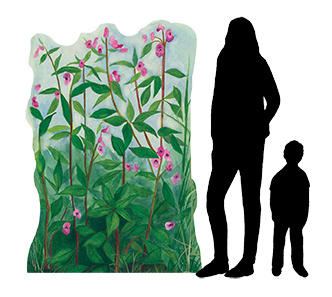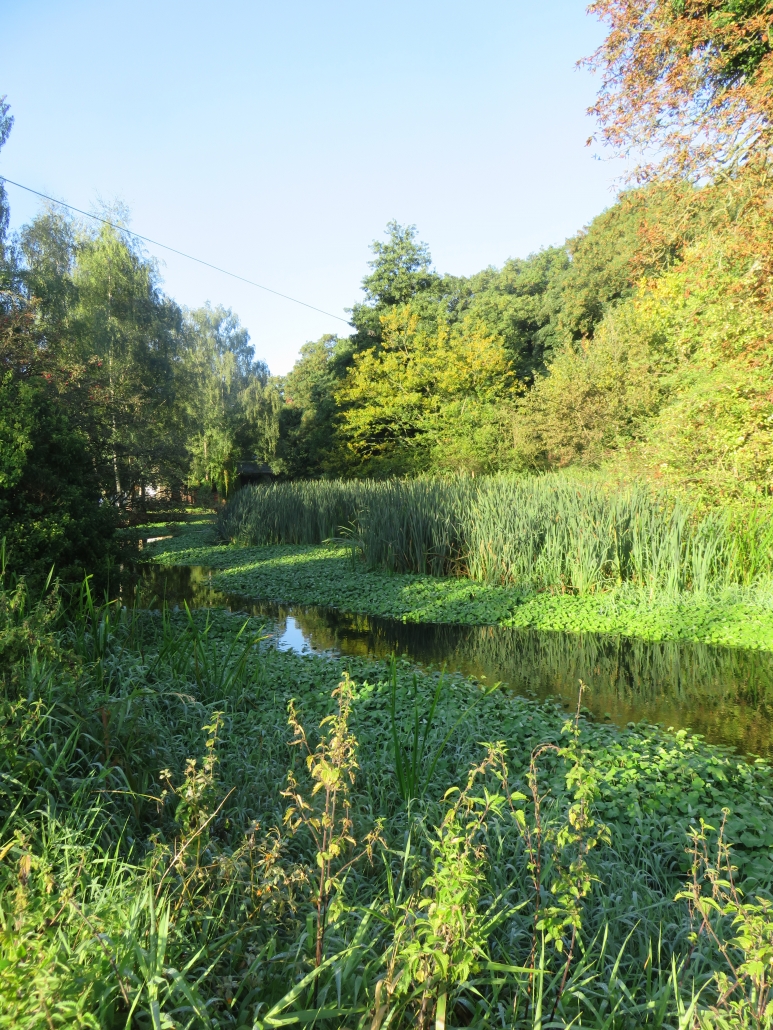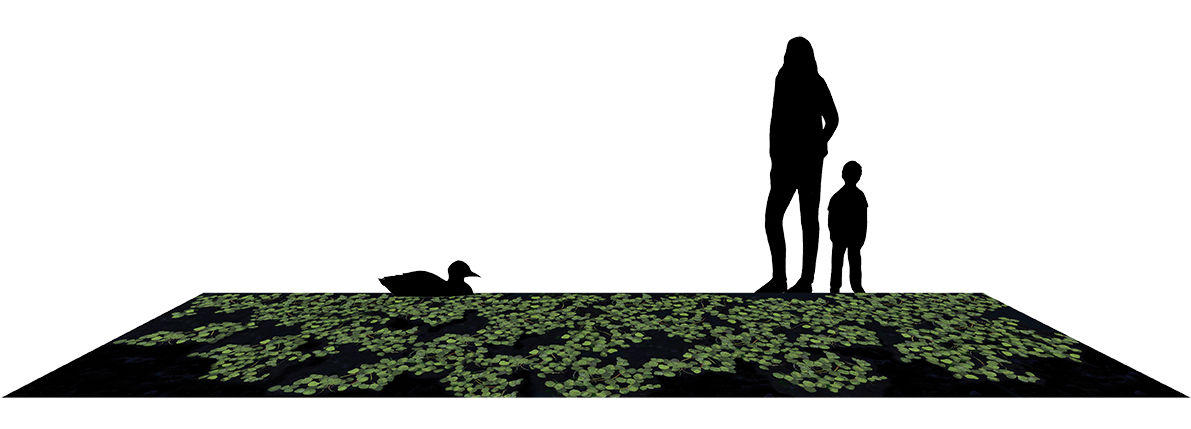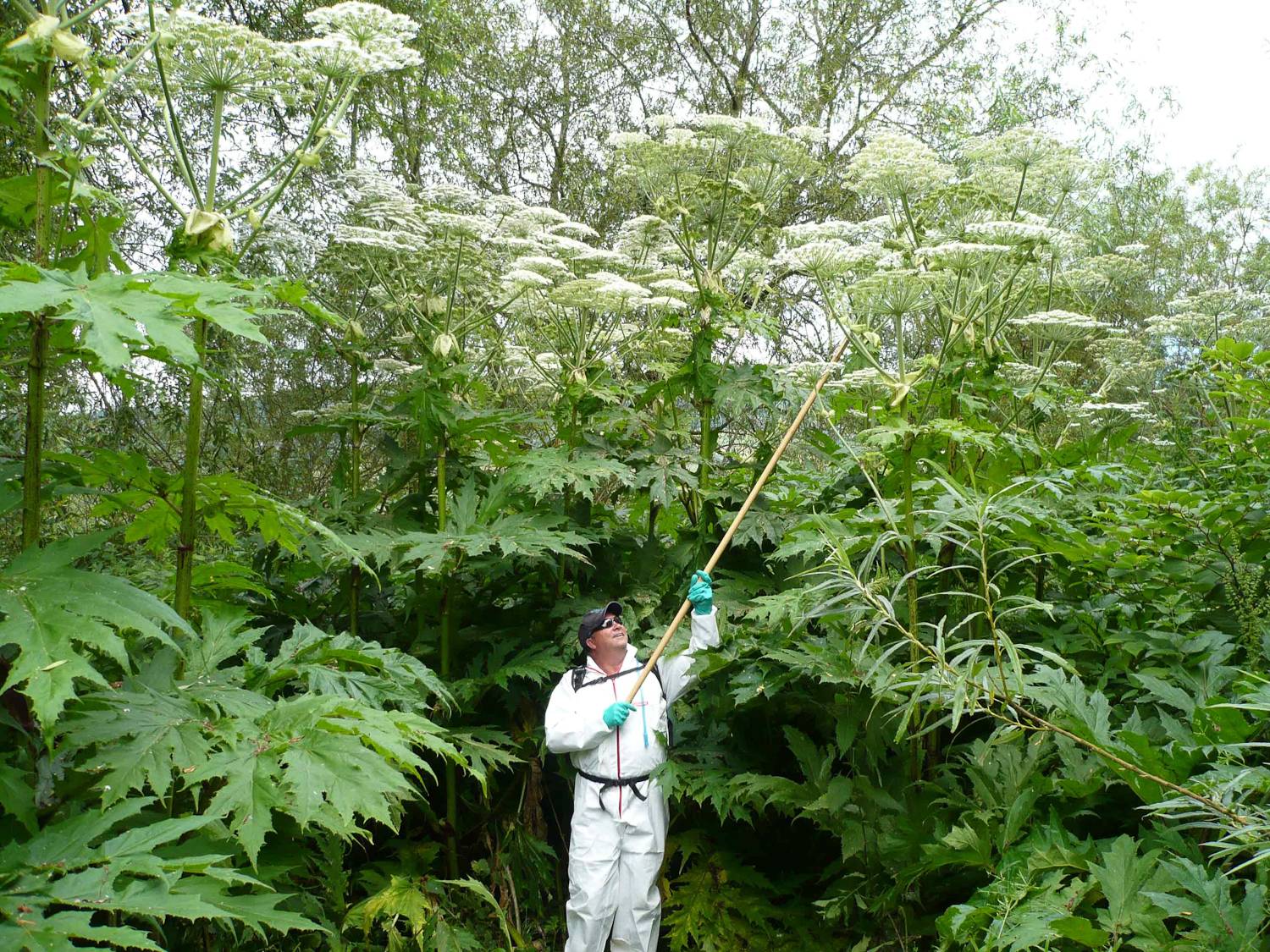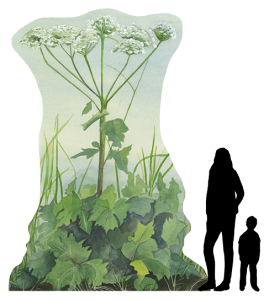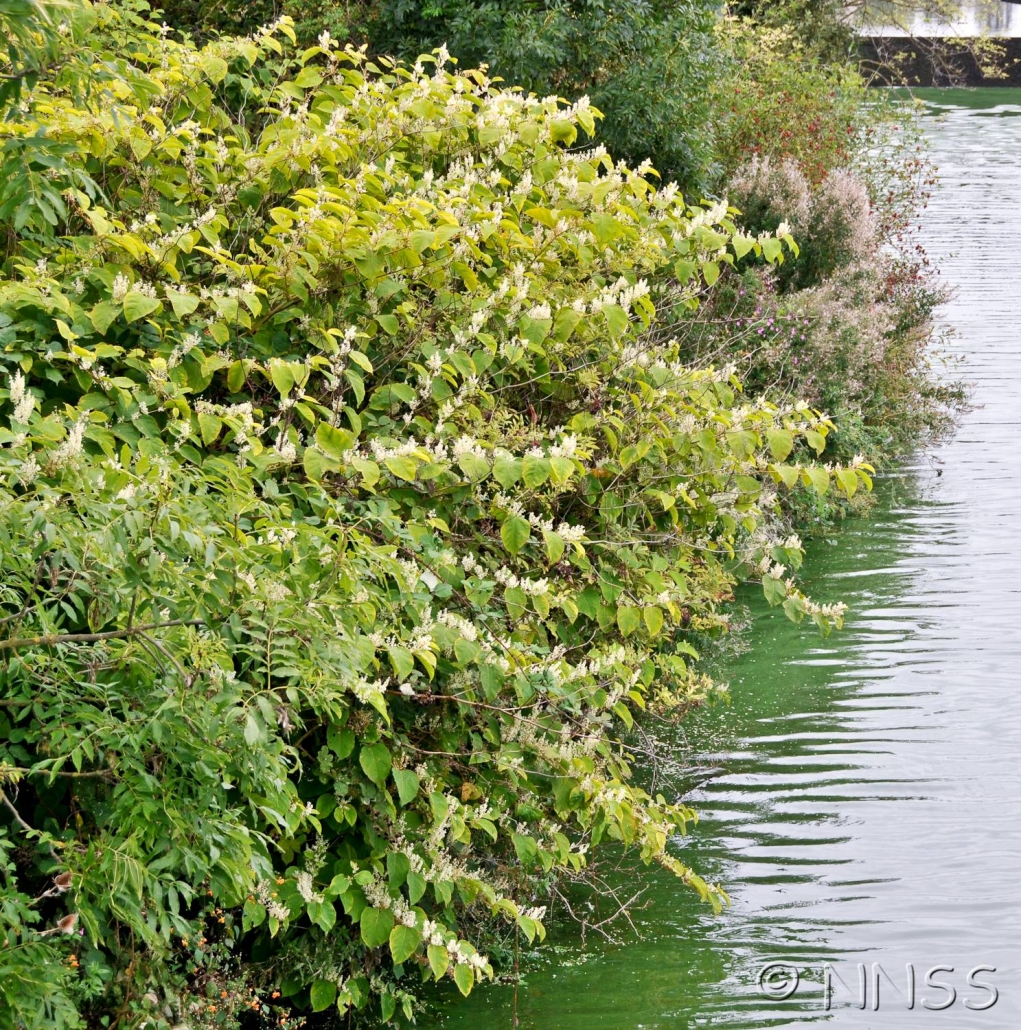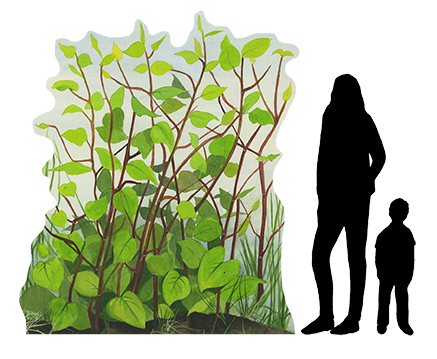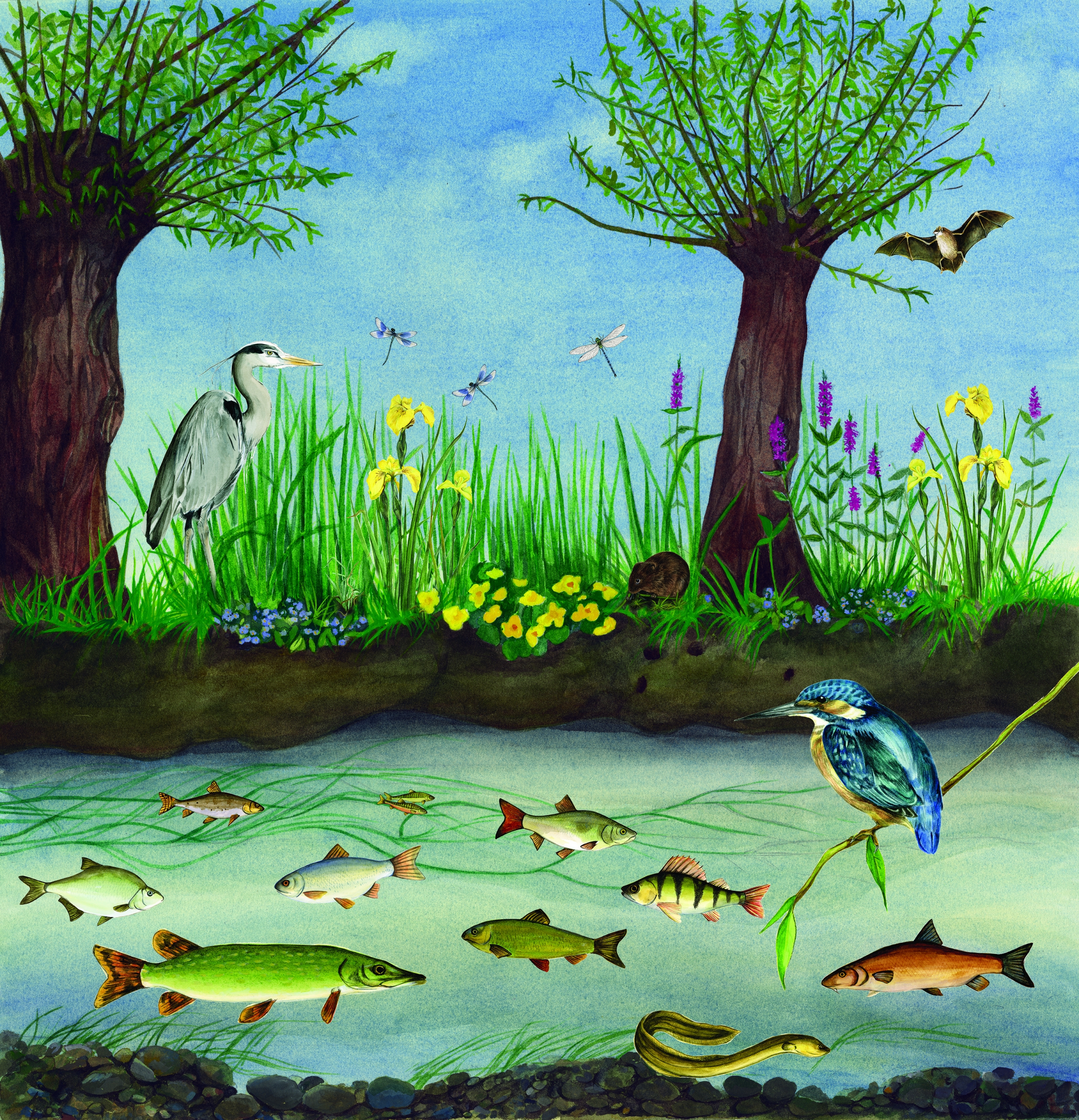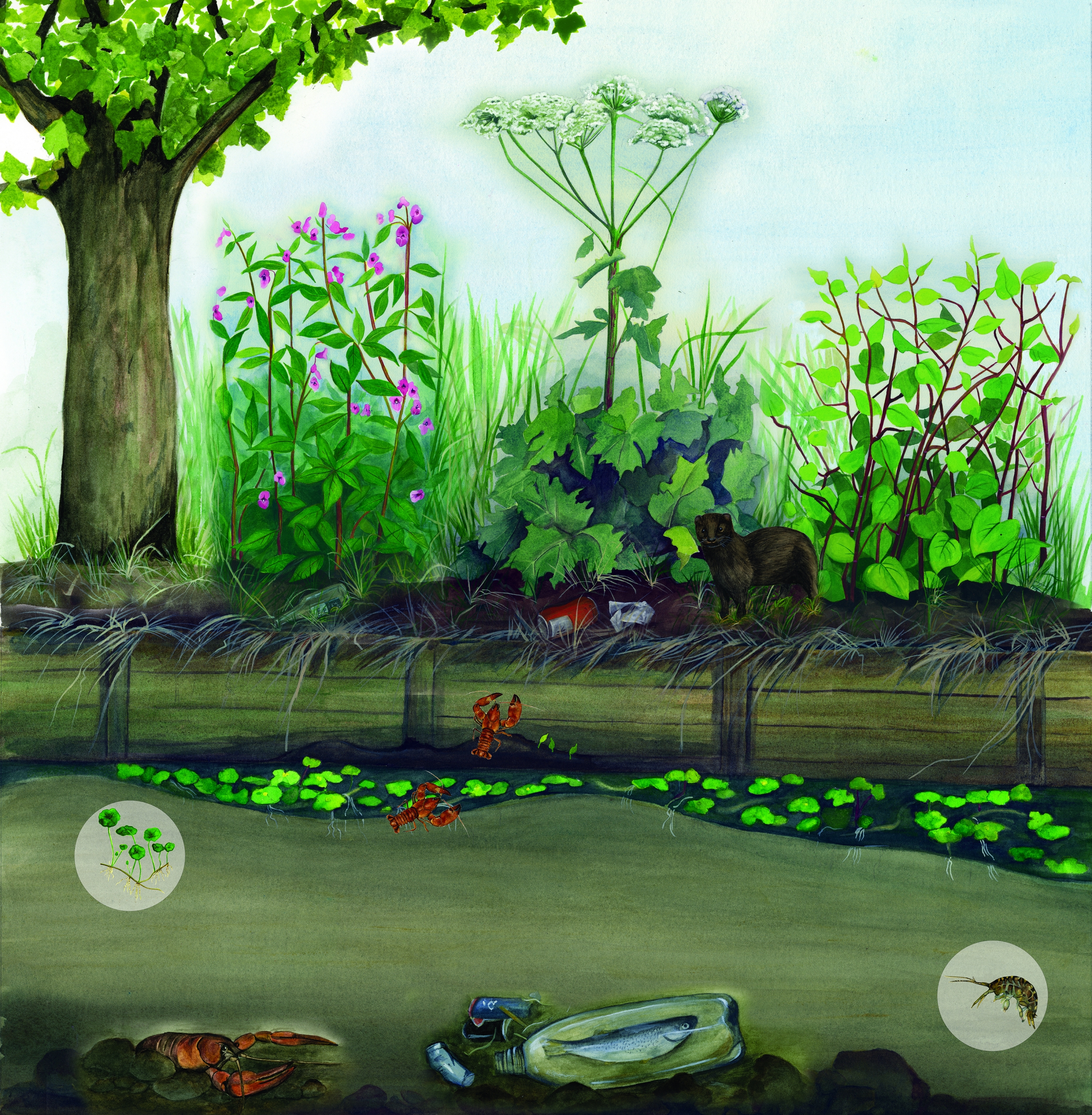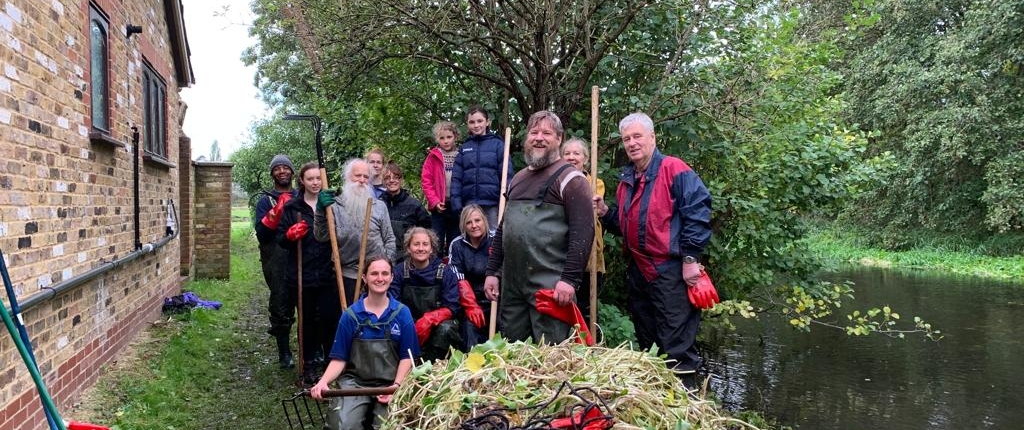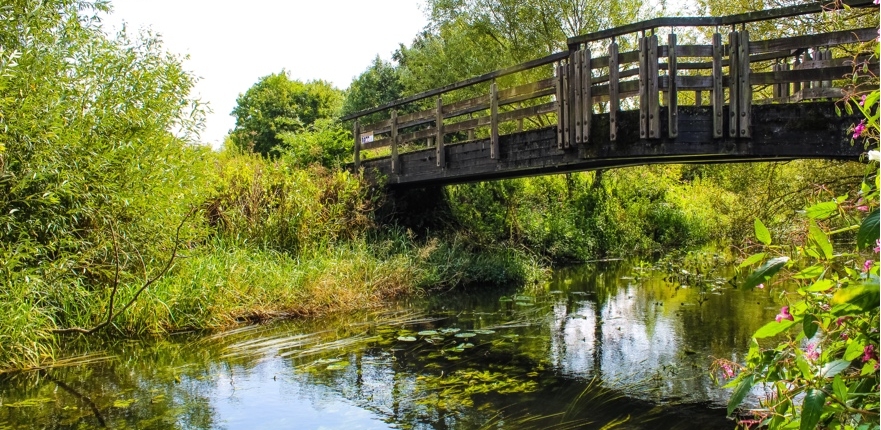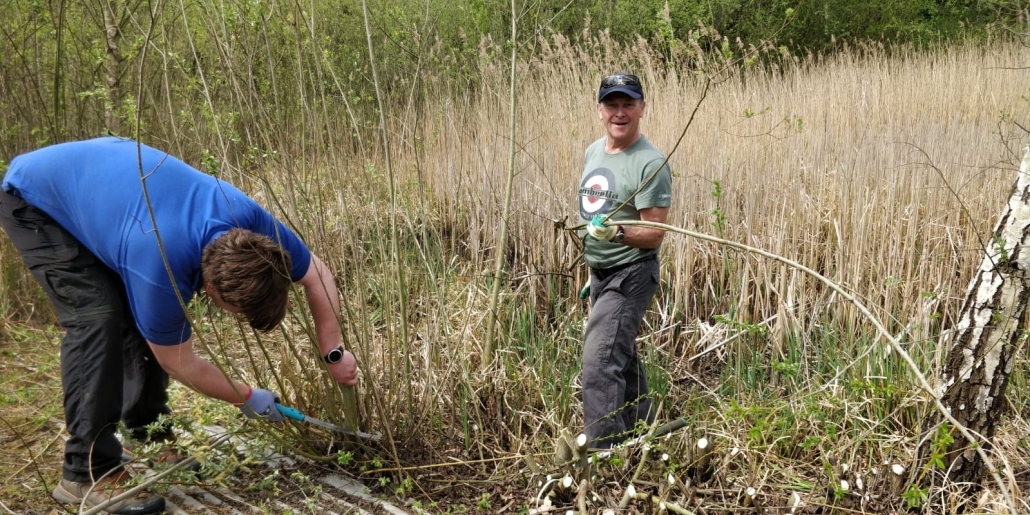Invasive Species
Invasive non-native species are defined as animals or plant species that have spread outside of their natural range and threaten native biodiversity. The Colne catchment has numerous invasive non-native species associated with the water environment such as Floating Pennywort and Signal Crayfish, which alter the biodiversity of the river system threatening native species.
The Landscape Partnership Scheme lead on a ’Invasive Species’ project to raise awareness of invasive species in the Colne Valley and provide advice to landowners and the public on effective control methods. The main focus of the project was on plant invasive species with a particular interest for Floating Pennywort, Hydrocotyle ranunculoides and Himalayan Balasm,Impatiens glandulifera, two abundant species which are detrimental to the local river systems.
Non-native Invasive Species Reporting
Non-native invasive species and wildlife disease can have significant impacts on biodiversity, human society and its economic interests. About 10-15% of non-native species established in GB cause significant adverse impacts. If you spot any non native invasive species in Colne Valley Regional Park please report your finding to CVFC NNIS database to help identify current population and direct future control action. This NNIS reporting system helps us track these species and involve the appropriate authorities.
Download our Non-Native Invasive Species ID sheet here.
To find out more or report NNIS, go to the CVFC NNIS page.

Tackling the invasive species with the help of volunteers
During the project we had an amazing team of volunteers helping us out surveying the rivers and report on non-native Invasive Species. Find out more what they were up to and how they contributed to the project and nature.
Himalayan Balsam
Himalayan Balsam is a native species to the western Himalayans in North India. It was introduced to the UK in 1839 for ornamental purposes but escaped from gardens and became naturalised in Britain 1850s. It rapidly colonises the river banks and areas of damp ground at the rate of spread of 645km2 annually with seeds viable up to two years. The species is now well established across the United Kingdom and throughout Colne Valley Regional Park. The species grows in dense thickets along river banks, damp areas and wet woodlands. Each plant can produce up to 800 seeds which can be ejected up to 7m from the plant and spread along watercourses. The species dominates wet habitats suppressing the growth of native plant species and dies back in autumn leaving riverbanks bare throughout winter increasing riverbank erosion threatening our local rivers.
Invasive Species Identification and Control Guide for Himalayan Balsam
For more information about Himalayan Balsam download our Identification and Control Guides below.
Himalayan Balsam Identification
Ever walked by a riverbank but had your scenic view ruined by a wall of vegetation? You’re probably angrily staring at the heinous Himalayan Balsam, a non-native invasive species that’s robbing our riverbanks dry! Its beautiful pink flowers may cast no suspicions but don’t be fooled – this plant spells bad news for our native flora. Here, Chloe will tell you how to identify the pink (and green) menace and how you can stop the spread of this villain to save our riverbanks.
Floating Pennywort
Floating Pennywort is a native species of North and South America. It was brought to Britain in 1980s as plant for tropical aquaria and garden ponds but escaped into the wild where it naturalised in 1990s. It spreads rapidly and is commonly found in south-east England and occasionally in north-west England and Wales. The species grows in shallow margins of slow flowing river systems and water bodies. The species is a major threat to Colne Valley rivers, the species can regrow from a single node and has a rapid growth rate, up to 20cm per day, forming dense matts of entwined vegetation, which dominate watercourses, obstruct boats, prevent angling, and outcompetes native species.
Invasive Species Identification and Control Guide for Floating Pennywort
For more information about Floating Pennywort download our Identification and Control Guides below.
Floating Pennywort Identification
Ever seen a dense matt of green vegetation covering rivers that’s seems safe and solid enough to step on? What you’ve seen is likely the Felonious Floating Pennywort, a non-native invasive species that almost resembles a shamrock, shackling free-flowing rivers to a standstill – with one fragment being enough to start a full-scale invasion. Here, Jess will tell you how to identify these unlucky pennies and how you can report them to stop their spread.
Giant Hogweed
Giant Hogweed is a species native to the Caucasus mountains in South West Russia and Georgia. It was introduced to the UK in 1820 for ornamental purposes but escaped from gardens and became naturalised in Britain in the 1828. It rapidly colonises the waste land and river banks creating detrimental affects on the riparian and aquatic environment as well as threatening human health due to its phytotoxic sap causing serve skin blistering.
Invasive Species Identification and Control Guide for Giant Hogweed
For more information about Giant Hogweed download our Identification and Control Guides below.
Giant Hogweed Identification
Ever seen a weed that’s giant and hogging riverbanks, roadsides and wastelands? It’s most likely the Giant Hogweed, a non-native invasive species harming park-goers and nature-lovers everywhere! As the name may suggest, the plant is a giant among weeds, overshadowing the other poor sun-dependent plants. Yet despite this striking feature, this plant is somehow inconspicuous. How, you may ask? Find out the other key identifying traits to spot this beast hiding amongst the plant crowd and why it’s been dubbed as ‘one of the most dangerous plants’ in the UK.
Giant Hogweed – Similar Species Comparison
Yes, Giant Hogweed, a non-native invasive species responsible for crimes against humanity and wildlife/guilty for multiple offences against humans and wildlife. Yet despite its name and reputation, its somehow elusive – why? Turns out it belongs to a family with very similar features. In this video, learn more about the usual suspects as we line them up against the wall and find out which of these species are responsible for harming/injuring park-goers and nature-lovers all across the UK.
Japanese Knotweed
Japanese Knotweed is a native plant species in Japan, China and Taiwan. It was introduced to the UK in the mid 19th century for ornamental purposes but escaped from gardens and became naturalised as early as 1886. Japanese Knotweed is a tall herbaceous perennial with bamboo like stem, which grows in dense thickets commonly found in disturbed areas such as urban environments, riverbanks and transportations routes.
Japanese Knotweed has been spread across the United Kingdom through human transportation routes and watercourses moving fragments of the plant. The spread of the species has detrimental affects on the riparian and aquatic environment ‘as well as human economy’.
Invasive Species Identification and Control Guide for Japanese Knotweed
For more information about Japanese Knotweed download our Identification and Control Guides below.
Japanese Knotweed Identification
Ever seen a seemingly small-innocuous pair of heart-shaped leaves growing by your doorstep or house walls? Don’t fall for the Juvenile Japanese Knotweed, a non-native invasive species, where in a short space of time, grows almost anywhere and multiplies from its underground root system into tall, resilient bamboo-like stems that can cause destructive damage to urban infrastructure and the natural environment. Here, you’ll learn how to identify the main features of this plant and learn how it’s literally turning our streets and homes a concrete jungle!
Biosecurity and Prevention
Invasive species can spread accidentally through natural transport routes such as rivers, wind, animal migration as well as through human transportation such as boats and footwear, therefore it is important to follow good biosecurity controls to reduce the risk of introducing or spreading invasive non-native species (and other harmful organisms such as diseases) in the wild it.
They can be small and hard to spot so are easily spread on damp equipment and clothing. You can help to protect the environment and activities you enjoy by keeping your kit free of invasive plants and animals using simple method:
- Check your equipment, boat, and clothing after leaving the water for mud, aquatic animals or plant material. Remove anything you find and leave it at the site.
- Clean everything thoroughly as soon as you can, paying attention to areas that are damp or hard to access. Use hot water if possible.
- Dry everything for as long as you can before using elsewhere as some invasive plants and animals can survive for over two weeks in damp conditions.
To find out more check out the check clean and dry campaign here http://www.nonnativespecies.org//checkcleandry/index.cfm?
Help stop the spread of invasive species on our land and in our water!
Example of good river
Example of bad river
Invasive Species in the News
Surprise! It’s BBC Countryfile
We were very excited when the Colne Valley Regional Park was featuring on the programme early March 2021. Charlotte Smith joined Chloe Crompton our River Manager to hear all about our fantastic group of River Rangers with over 90 registered volunteers and what we have been tackling over the last few years- the pesky and damaging floating pennywort. Floating Pennywort is a non native invasive species which was brought to Britain from South America in 1980s as a plant for tropical aquaria and garden ponds but escaped into the wild where it naturalised in 1990s.
Attack of the Space Invaders: Non-Native Invasive Species in the Colne Valley
The Colne Valley Regional Park covers 43 square miles and is interspersed with a variety of habitats and over 200km of rivers and canals. This beautifully diverse area is under attack by “space invaders” that threaten to disrupt the natural order of its aquatic and riparian ecosystems. Find out more..
A Giant Among Weed
Dubbed as UK’s ‘most dangerous plant’, the non-native invasive (NNIS for short) Giant Hogweed certainly lives up to its name, growing 5-6m tall, towering over our native plants and severely injuring unsuspecting park-goers and outdoor lovers unfortunate enough to come across it. But where did it come from? How is it so harmful? And what can you do to protect yourself?
Floating Pennywort – The not-so-lucky pennies covering our rivers
Despite being green and almost resembling a shamrock, there is nothing lucky about finding these floating pennies in your local river or water bodies. Though the leaves of Floating Pennywort are quite small in size – reaching only up to 7cm in diameter – they are a river-lover’s nightmare, forming matts of vegetation so dense that it suffocates flowing rivers to an almost stand-still and completely blocking off navigation routes. And in typical non-native invasive species fashion, they don’t seem to want to stop until all water bodies are swamped in greenery. But where did they come from? How do they do it? And is there anything we can do to stop them?
Nature’s Space Invaders
The watercourses are the blue veins of the Colne Valley Regional Park, providing a lifeline for all wildlife, encouraging a diversity of aquatic and terrestrial species and giving a vital source of water, recreation and relaxation for us humans, too. Sadly, they face many challenges and threats, main ones are over-abstraction, pollution, high water consumption and the widespread problem of non-native invasive species (NNIS) our ‘space invaders’ Find out how we are helping….
The battle against Invasive Species
The Colne Valley Team are working hard to reduce Invasive Species which are growing abundantly in the Colne Valley Park, damaging our native eco system. This takes determination as these species are very effective at spreading. Invasive Species week which ran from 16th-22nd May 2022 has inspired the team to redouble their efforts.
